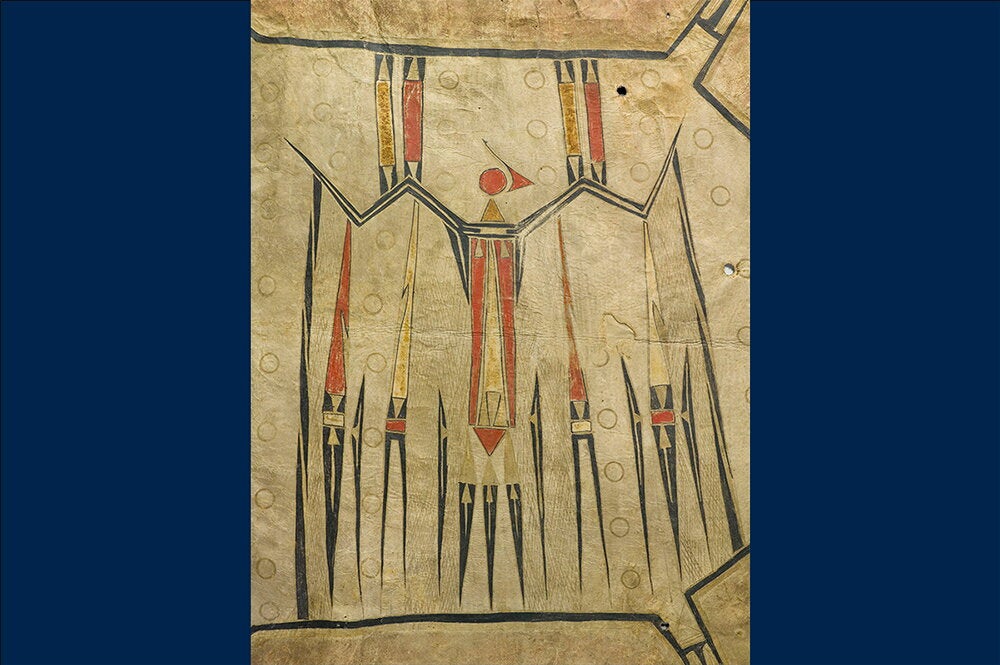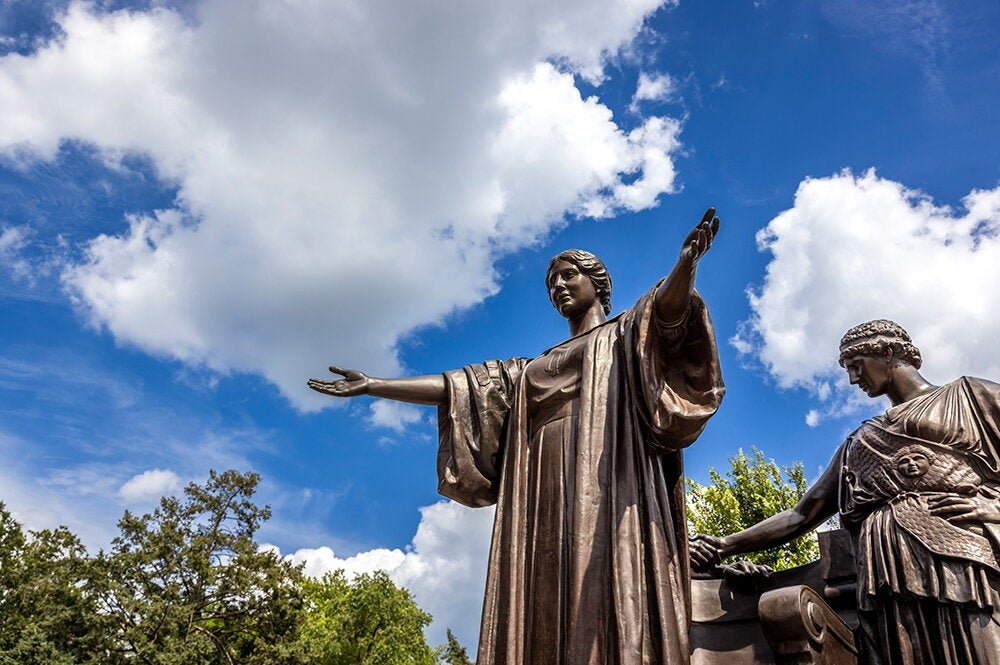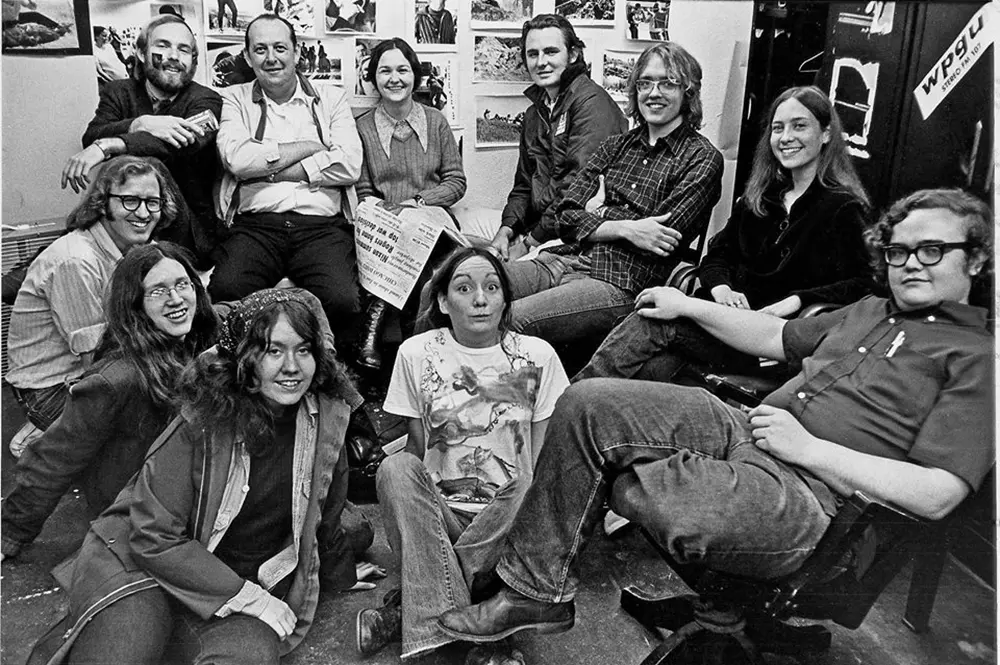
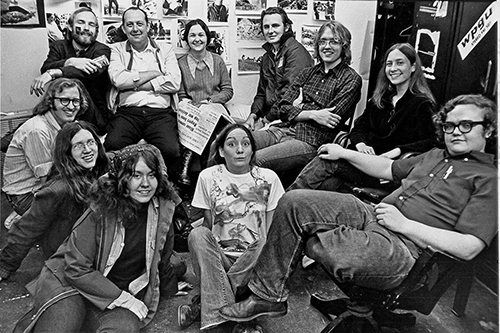
Late nights under deadline. Smoky rooms. Protesters. Eagerly awaiting the roll of the presses. This is part of the history of Illini Hall, which for many years housed the offices of The Daily Illini. Now a group of former reporters, editors, and photographers who worked at the student newspaper want to pay homage to the building before its demolition.
They worked at The Daily Illini during 1970s, which was an interesting era on campus—and an exciting time for journalism—and stayed in touch for decades, even as their own careers and lives took different paths. Once the university announced the demolition of Illini Hall, the group decided to see the 114-year-old building one last time.
The plans for the reunion include about 70 people who graduated from around 1972 to 1980. They plan to meet on campus in September to see Illini Hall and also visit the YMCA, where The Daily Illini has been located since 2018. It’s two blocks south of where The Daily Illini was produced from roughly 1950 to 1988.
Illini Hall will be replaced by a six-story, roughly 140,000-square foot building as part of the $192 million Altgeld and Illini Hall Project to modernize and grow spaces for data science and other mathematical and statistical sciences. Altgeld Hall, immediately to the east of Illini Hall, is being renovated.
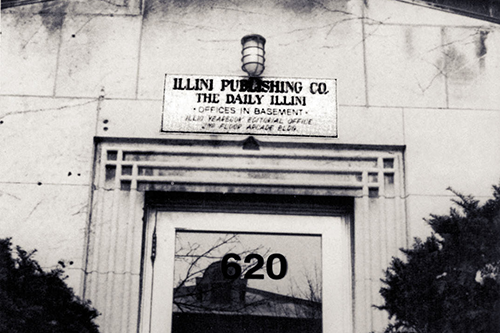
Louise Gilmore Donahue (BA, ’76, journalism), who is organizing the upcoming reunion, said that, for a variety of reasons, former “DI-ers” of that era maintained a strong bond after parting ways post-graduation. She served as news editor at The Daily Illini from 1974-75 before going on to work as a copy editor or news editor at newspapers and magazines around the country.
“If someone had asked us when we were at the DI whether we’d come back to campus for a reunion when most of us were retired, we probably would have thought you were nuts,” she said. “There’s something special about the bonds newspaper people develop, though. When the newspaper people are college kids getting their first real taste of journalism, the connections are even stronger. The crew working late into the night in the Illini Hall basement had a sense of mission, as well as a lot of fun. It was a heady time, and we were full of Watergate-era enthusiasm.”
She said that the group hoped to revisit Illini Hall in fall 2020, but the plans were put on hold until this year because of the pandemic.
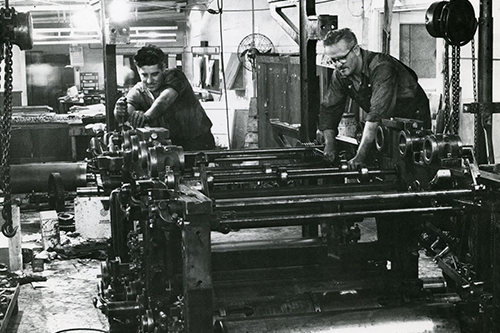
Randy Kulat (BA, ’77, history; JD, ’80, law), who covered sports at The Daily Illini, recalls many late nights in the basement of Illini Hall or driving to Rantoul, where the newspaper was printed. Kulat and several of his former colleagues recall not only creating a newspaper that they were proud of, but forming meaningful relationships.
Other than hopefully seeing the old newsroom, the group is also planning for a pizza dinner, as pizza was one of the important aspects of the newsroom at the time. To their advantage, there used to be a Garcia’s Pizza right next to Illini Hall.
“We kind of stayed in touch and wanted to have one last look at Illini Hall before it goes,” Kulat said. “I just really enjoyed my time at U of I."
Illini Hall was built in 1907, which, coincidentally, was the same year that The Daily Illini assumed its current name. It wasn't until 43 years later, however, that The Daily Illini moved its newsroom into the basement of the building. It was a good fit. Alumni fondly recall its gritty atmosphere where lifelong friendships were formed and careers were launched. Former editor in chief Arthur Drake (BA, ‘76, political science) had his own office in Illini Hall, but he always kept his door open.
“People would come in and talk to me about stuff, people would come down and just bounce ideas around, and occasionally they'd lay down on the couch and drift off,” Drake said. “That was the life of the editor."
He said much of the news coverage during his year as editor was committee meetings and lots of concert and movie reviews. He remembers one issue that included a United Nations resolution regarding Israel and Zionism that resulted in protesters standing outside the office of The Daily Illini.
“I think the protesters stood outside our office for that one, and they posed for a picture, to the dismay of the (photographers), who preferred more spontaneous shots,” Drake said.
Drake said he doesn’t get too sentimental about buildings, but that his memories of Illini Hall are more about the people he met. He said the newsroom was always noisy with people talking or laughing with each other and he was happy to sit around and listen to them.
"It's not about campus, it's not about Illini Hall. It's about those people. And once again, I'd just be happy to be around them and bask in their coolness," Drake said.
Post-graduation, Drake went on to be news editor of the Paxton Daily Record in Paxton, Illinois, and then a copy editor and reporter for The Indianapolis Star. In 1981, Drake bought a weekly newspaper in Wisconsin and worked there for about 25 years, picking up two other weekly newspapers around the area before selling them and retiring. After retirement, Drake freelanced for a bit as well.
Kulat also relied upon his experience at The Daily Illini for his career, but in a slightly different way than Drake. Kulat attended law school at Illinois, and also served as a graduate student member of the Illini Publishing Company Board. He now practices law in public finance.
"To be honest, a lot of what I do as a lawyer is really helped by my experience from my four-plus years at The Daily Illini,” he said. “A lot of what I do is writing and drafting things."
Kulat joined The Daily Illini the first week of his freshman year as a sports copy editor and moved on to covering all kinds of sports including track, swimming, football and basketball. He was hired as opinions editor his senior year, thinking the experience would help him get into law school.
As a freshman, Kulat would drive to Rantoul with a couple of the seniors on staff to see the paper get printed. They would drive there late Friday nights and wouldn’t return until early Saturday morning. It was exciting to know that by morning, Kulat said, thousands of people would be picking up those newspapers.
There were some interesting news items that came in from the Main Quad, within shouting distance of Illini Hall. He recalls one night when thousands of students streaked through, minus clothing. He said one student even parachuted down onto the Main Quad to participate. (Drake went to check it out—and, he added, remained fully clothed.)
It was the perfect location for a newsroom, Kulat said. They felt like they were at “the center of power,” being that they were right on campus, but that “you kind of entered a different world when you went down these steps into Illini Hall. You were kind of removed from the campus but still really a part of it.”
Ron Logsdon (BA, ‘72, political science), came to the U of I after serving in the Vietnam War. where he served in the Air Force. One day he took a picture of a police officer writing a ticket for a student who was riding a bicycle on the Main Quad, and he brought it over to The Daily Illini to see if the editors were interested in running it. Sure enough, the photo was on the front page the next day.
After that, he started regularly shooting photos and reporting for the newspaper.
“I couldn't have asked for a better group of people to get involved with and I'll be grateful for the rest of my life for that," Logsdon said.
Logsdon said the best word to describe Illini Hall at that time was “incubator,” as it produced so many future photographers, reporters, editors, and designers. After graduating, Logsdon spent about 10 years as a newspaper reporter in the Chicago area and then spent 22 years as a copy editor in Los Angeles. He ended his career at the Los Angeles Times.
“Illini Hall, I think, was perfect,” Logsdon said. “It was like the traditional view of newspaper reporters, ink-stained wretches, which we took pride in. The building was shabby, but we felt comfortable there. It was just very cozy, really. It wasn't huge. We'll all miss that. It's a little bit of history that's disappearing.”
